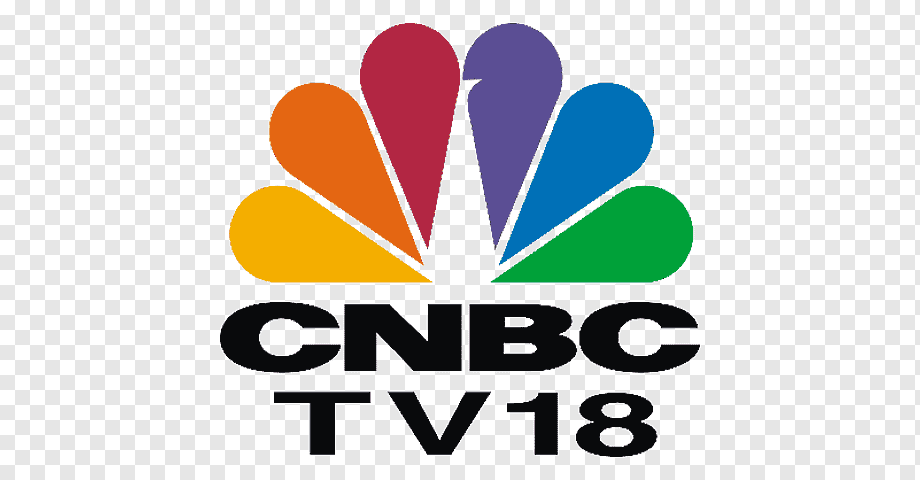Advertisement|Remove ads.
Meta is earning a fortune on a deluge of fraudulent ads, documents show
On average, one December 2024 document notes, the company shows its platforms’ users an estimated 15 billion “higher risk” scam advertisements – those that show clear signs of being fraudulent – every day. Meta earns about $7 billion in annualized revenue from this category of scam ads each year, another late 2024 document states.

Meta internally projected late last year that it would earn about 10% of its overall annual revenue – or $16 billion – from running advertising for scams and banned goods, internal company documents show.
A cache of previously unreported documents reviewed by Reuters also shows that the social-media giant for at least three years, failed to identify and stop an avalanche of ads that exposed Facebook, Instagram and WhatsApp’s billions of users to fraudulent e-commerce and investment schemes, illegal online casinos, and the sale of banned medical products.
On average, one December 2024 document notes, the company shows its platforms’ users an estimated 15 billion “higher risk” scam advertisements – those that show clear signs of being fraudulent – every day. Meta earns about $7 billion in annualized revenue from this category of scam ads each year, another late 2024 document states.
Much of the fraud came from marketers acting suspiciously enough to be flagged by Meta’s internal warning systems. But the company only bans advertisers if its automated systems predict the marketers are at least 95% certain to be committing fraud, the documents show. If the company is less certain – but still believes the advertiser is a likely scammer – Meta charges higher ad rates as a penalty, according to the documents. The idea is to dissuade suspect advertisers from placing ads.
The documents further note that users who click on scam ads are likely to see more of them because of Meta’s ad-personalisation system, which tries to deliver ads based on a user’s interests.
The details of Meta’s confidential self-appraisal are drawn from documents created between 2021 and this year across Meta’s finance, lobbying, engineering and safety divisions. Together, they reflect Meta’s efforts to quantify the scale of abuse on its platforms – and the company’s hesitancy to crack down in ways that could harm its business interests.
Meta’s acceptance of revenue from sources it suspects are committing fraud highlights the lack of regulatory oversight of the advertising industry, said Sandeep Abraham, a fraud examiner and former Meta safety investigator who now runs a consultancy called Risky Business Solutions.
“If regulators wouldn’t tolerate banks profiting from fraud, they shouldn’t tolerate it in tech,” he told Reuters.
In a statement, Meta spokesman Andy Stone said the documents seen by Reuters “present a selective view that distorts Meta’s approach to fraud and scams.” The company’s internal estimate that it would earn 10.1% of its 2024 revenue from scams and other prohibited ads was “rough and overly- inclusive,” Stone said. The company had later determined that the true number was lower, because the estimate included “many” legitimate ads as well, he said. He declined to provide an updated figure.
“The assessment was done to validate our planned integrity investments – including in combating frauds and scams – which we did,” Stone said. He added: “We aggressively fight fraud and scams because people on our platforms don’t want this content, legitimate advertisers don’t want it and we don’t want it either.”
"Over the past 18 months, we have reduced user reports of scam ads globally by 58% and, so far in 2025, we’ve removed more than 134 million pieces of scam ad content,” Stone said.
Some of the documents show Meta vowing to do more. "We have large goals to reduce ad scams in 2025," states a 2024 document, with Meta hoping to reduce such ads in certain markets by as much as 50%. In other places, documents show managers congratulating staffers for successful scam reduction efforts.
HOW META POLICES FRAUD
Internally, Meta refers to scams like this one as “organic,” meaning they don’t involve paid ads on its platforms. Organic scams include fraudulent classified ads placed for free on Facebook Marketplace, hoax dating profiles and charlatans touting phony cures in cancer-treatment groups.
According to a December 2024 presentation, Meta’s user base is exposed to 22 billion organic scam attempts every day. That’s on top of the 15 billion scam ads presented to users daily. Meta polices fraud in a way that fails to capture much of the scam activity on its platforms, some of the documents indicate.
After police in Singapore gave the company a list of 146 examples of scams targeting that country’s users last fall, Meta staff found that only 23% actually violated the platform’s policies. The other 77% “violate the spirit of the policy, but not the letter,” a Meta presentation about the police reports notes.
The deceptive marketing flagged by Singaporean police that Meta didn’t act on included “too good to be true” offers of 80% off a designer fashion brand, promotions for fake concert tickets, and job ads posted by entities falsely claiming to be major tech companies.
Other Meta safety staffers also documented instances in which the company’s rules on scams didn’t appear to cover obviously bad behaviour. In April, staffers noted that they’d discovered $250,000 in scam crypto ads from an account claiming to belong to Canada’s prime minister.
“Current policies would not flag this account!” an internal document says. Meta’s Stone said the ads were removed for other reasons. The prime minister’s office didn’t reply to a request for comment.
THE ‘SCAMMIEST SCAMMERS’ LIST AND ‘PENALTY BIDS’
Even when advertisers are caught red-handed, the rules can be lenient, the documents indicate. A small advertiser would have to get flagged for promoting financial fraud at least eight times before Meta blocked it, a 2024 document states. Some bigger spenders – known as “High Value Accounts” – could accrue more than 500 strikes without Meta shutting them down, other documents say.
Fraudulent ad campaigns can reach massive size: Four removed by Meta earlier this year were responsible for $67 million in monthly advertising revenue, a document reviewed by Reuters shows.
To draw attention to the company’s perceived failures, an employee earlier this year began issuing reports highlighting that week’s “Scammiest Scammer.” The report profiled whichever advertiser had earned the most user complaints about scams in the past week.
Colleagues praised the initiative. But being name-checked in the report wasn’t always enough for such accounts to get shut down. A check by Reuters of five accounts cited in one Scammiest Scammer report found that two were still live more than six months later, including one that was running ads for unlicensed online casinos. After Reuters flagged those two accounts to Meta, they were taken down.
Reuters was unable to reach the entities behind the accounts.
The company last year developed a novel approach to reduce scam advertising and keep its enforcement costs low: It began charging suspected fraudsters more.
To advertise on Meta’s platforms, a business has to compete in an online auction. Before the bidding, the company’s automated systems calculate the odds that an advertiser is engaged in fraud. Under Meta’s new policy, likely scammers who fall below Meta’s threshold for removal would have to pay more to win an auction.
Documents from last summer called such “penalty bids” a centerpiece of Meta’s efforts to reduce scams. Marketers suspected of committing fraud would have to pay Meta more to win ad auctions, thus impacting their profits and reducing the number of users exposed to their ads.
For Meta, the financial impact was mixed: While the company would sell fewer scam ads, it would make more money from those that it did, offsetting some of the lost revenue.
Stone said that the goal of the effort was to reduce overall scam advertising by making suspicious advertisers less competitive in Meta’s ad auctions.
In the months following the implementation of the penalty bid program, Stone said, testing showed both a decline in scam reports and a slight decline in overall ad revenue.
Read Also: Festive season drives 21% jump in India’s auto sales as GST 2.0 cuts boost buying
A cache of previously unreported documents reviewed by Reuters also shows that the social-media giant for at least three years, failed to identify and stop an avalanche of ads that exposed Facebook, Instagram and WhatsApp’s billions of users to fraudulent e-commerce and investment schemes, illegal online casinos, and the sale of banned medical products.
On average, one December 2024 document notes, the company shows its platforms’ users an estimated 15 billion “higher risk” scam advertisements – those that show clear signs of being fraudulent – every day. Meta earns about $7 billion in annualized revenue from this category of scam ads each year, another late 2024 document states.
Much of the fraud came from marketers acting suspiciously enough to be flagged by Meta’s internal warning systems. But the company only bans advertisers if its automated systems predict the marketers are at least 95% certain to be committing fraud, the documents show. If the company is less certain – but still believes the advertiser is a likely scammer – Meta charges higher ad rates as a penalty, according to the documents. The idea is to dissuade suspect advertisers from placing ads.
The documents further note that users who click on scam ads are likely to see more of them because of Meta’s ad-personalisation system, which tries to deliver ads based on a user’s interests.
The details of Meta’s confidential self-appraisal are drawn from documents created between 2021 and this year across Meta’s finance, lobbying, engineering and safety divisions. Together, they reflect Meta’s efforts to quantify the scale of abuse on its platforms – and the company’s hesitancy to crack down in ways that could harm its business interests.
Meta’s acceptance of revenue from sources it suspects are committing fraud highlights the lack of regulatory oversight of the advertising industry, said Sandeep Abraham, a fraud examiner and former Meta safety investigator who now runs a consultancy called Risky Business Solutions.
“If regulators wouldn’t tolerate banks profiting from fraud, they shouldn’t tolerate it in tech,” he told Reuters.
In a statement, Meta spokesman Andy Stone said the documents seen by Reuters “present a selective view that distorts Meta’s approach to fraud and scams.” The company’s internal estimate that it would earn 10.1% of its 2024 revenue from scams and other prohibited ads was “rough and overly- inclusive,” Stone said. The company had later determined that the true number was lower, because the estimate included “many” legitimate ads as well, he said. He declined to provide an updated figure.
“The assessment was done to validate our planned integrity investments – including in combating frauds and scams – which we did,” Stone said. He added: “We aggressively fight fraud and scams because people on our platforms don’t want this content, legitimate advertisers don’t want it and we don’t want it either.”
"Over the past 18 months, we have reduced user reports of scam ads globally by 58% and, so far in 2025, we’ve removed more than 134 million pieces of scam ad content,” Stone said.
Some of the documents show Meta vowing to do more. "We have large goals to reduce ad scams in 2025," states a 2024 document, with Meta hoping to reduce such ads in certain markets by as much as 50%. In other places, documents show managers congratulating staffers for successful scam reduction efforts.
HOW META POLICES FRAUD
Internally, Meta refers to scams like this one as “organic,” meaning they don’t involve paid ads on its platforms. Organic scams include fraudulent classified ads placed for free on Facebook Marketplace, hoax dating profiles and charlatans touting phony cures in cancer-treatment groups.
According to a December 2024 presentation, Meta’s user base is exposed to 22 billion organic scam attempts every day. That’s on top of the 15 billion scam ads presented to users daily. Meta polices fraud in a way that fails to capture much of the scam activity on its platforms, some of the documents indicate.
After police in Singapore gave the company a list of 146 examples of scams targeting that country’s users last fall, Meta staff found that only 23% actually violated the platform’s policies. The other 77% “violate the spirit of the policy, but not the letter,” a Meta presentation about the police reports notes.
The deceptive marketing flagged by Singaporean police that Meta didn’t act on included “too good to be true” offers of 80% off a designer fashion brand, promotions for fake concert tickets, and job ads posted by entities falsely claiming to be major tech companies.
Other Meta safety staffers also documented instances in which the company’s rules on scams didn’t appear to cover obviously bad behaviour. In April, staffers noted that they’d discovered $250,000 in scam crypto ads from an account claiming to belong to Canada’s prime minister.
“Current policies would not flag this account!” an internal document says. Meta’s Stone said the ads were removed for other reasons. The prime minister’s office didn’t reply to a request for comment.
THE ‘SCAMMIEST SCAMMERS’ LIST AND ‘PENALTY BIDS’
Even when advertisers are caught red-handed, the rules can be lenient, the documents indicate. A small advertiser would have to get flagged for promoting financial fraud at least eight times before Meta blocked it, a 2024 document states. Some bigger spenders – known as “High Value Accounts” – could accrue more than 500 strikes without Meta shutting them down, other documents say.
Fraudulent ad campaigns can reach massive size: Four removed by Meta earlier this year were responsible for $67 million in monthly advertising revenue, a document reviewed by Reuters shows.
To draw attention to the company’s perceived failures, an employee earlier this year began issuing reports highlighting that week’s “Scammiest Scammer.” The report profiled whichever advertiser had earned the most user complaints about scams in the past week.
Colleagues praised the initiative. But being name-checked in the report wasn’t always enough for such accounts to get shut down. A check by Reuters of five accounts cited in one Scammiest Scammer report found that two were still live more than six months later, including one that was running ads for unlicensed online casinos. After Reuters flagged those two accounts to Meta, they were taken down.
Reuters was unable to reach the entities behind the accounts.
The company last year developed a novel approach to reduce scam advertising and keep its enforcement costs low: It began charging suspected fraudsters more.
To advertise on Meta’s platforms, a business has to compete in an online auction. Before the bidding, the company’s automated systems calculate the odds that an advertiser is engaged in fraud. Under Meta’s new policy, likely scammers who fall below Meta’s threshold for removal would have to pay more to win an auction.
Documents from last summer called such “penalty bids” a centerpiece of Meta’s efforts to reduce scams. Marketers suspected of committing fraud would have to pay Meta more to win ad auctions, thus impacting their profits and reducing the number of users exposed to their ads.
For Meta, the financial impact was mixed: While the company would sell fewer scam ads, it would make more money from those that it did, offsetting some of the lost revenue.
Stone said that the goal of the effort was to reduce overall scam advertising by making suspicious advertisers less competitive in Meta’s ad auctions.
In the months following the implementation of the penalty bid program, Stone said, testing showed both a decline in scam reports and a slight decline in overall ad revenue.
Read Also: Festive season drives 21% jump in India’s auto sales as GST 2.0 cuts boost buying
Read about our editorial guidelines and ethics policy














/filters:format(webp)https://news.stocktwits-cdn.com/large_Peloton_resized_jpg_93cd10e1ea.webp)
/filters:format(webp)https://st-everywhere-cms-prod.s3.us-east-1.amazonaws.com/IMG_9209_1_d9c1acde92.jpeg)
/filters:format(webp)https://news.stocktwits-cdn.com/large_f_150_lightning_jpg_311100907b.webp)
/filters:format(webp)https://news.stocktwits-cdn.com/IMG_8805_JPG_6768aaedc3.webp)
/filters:format(webp)https://news.stocktwits-cdn.com/large_xpeng_tesla_jpg_f07bd782e4.webp)
/filters:format(webp)https://news.stocktwits-cdn.com/large_Getty_Images_2205716060_jpg_b54d4e2d13.webp)
/filters:format(webp)https://images.cnbctv18.com/uploads/2025/11/wework-karanvirwani-nov07-2025-11-25b159df8b627b532542810e5eb4c9c4.jpg)
/filters:format(webp)https://st-everywhere-cms-prod.s3.us-east-1.amazonaws.com/cnbctv18logo.png)
/filters:format(webp)https://news.stocktwits-cdn.com/large_trump_uzbekistan_jpg_f249d47515.webp)